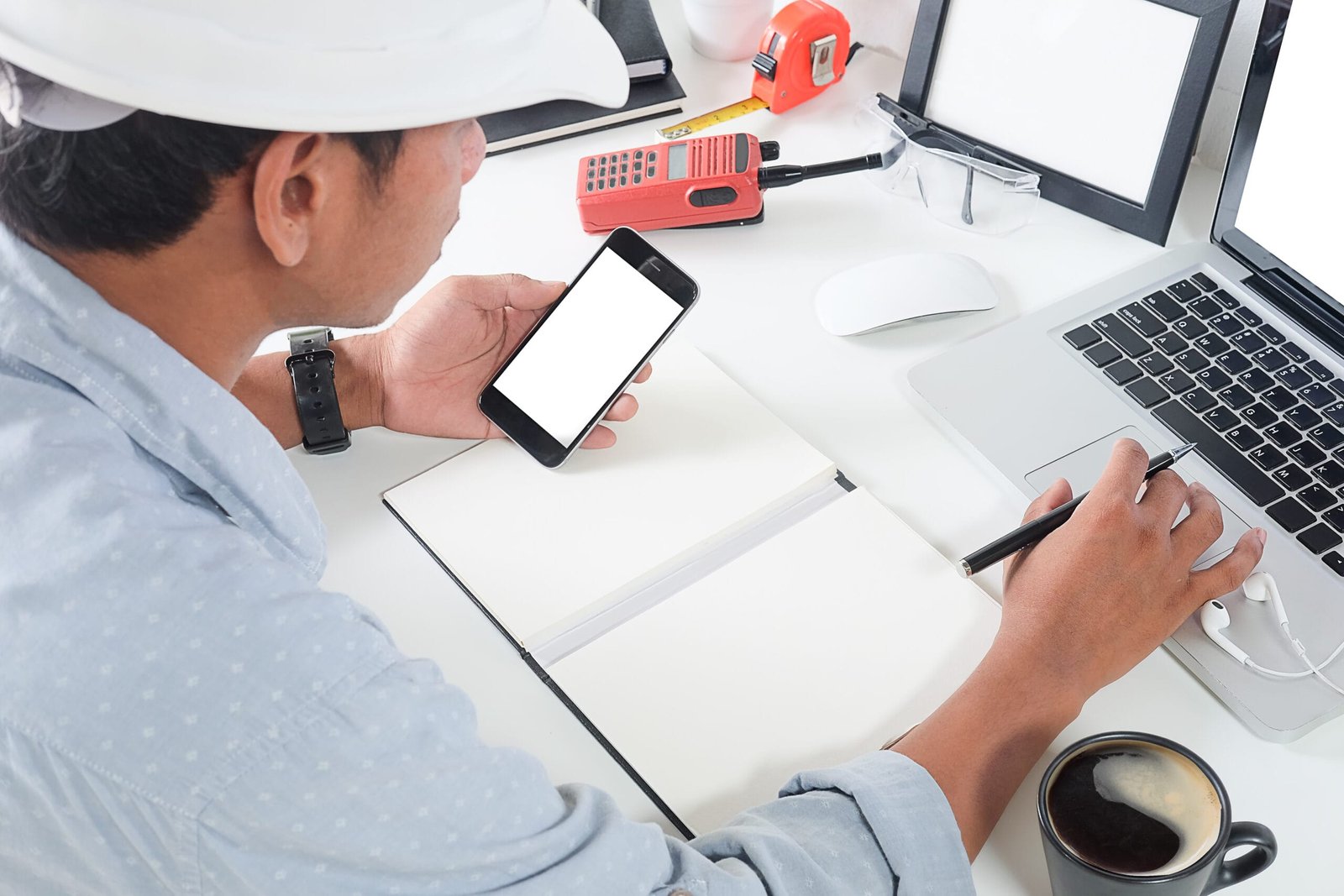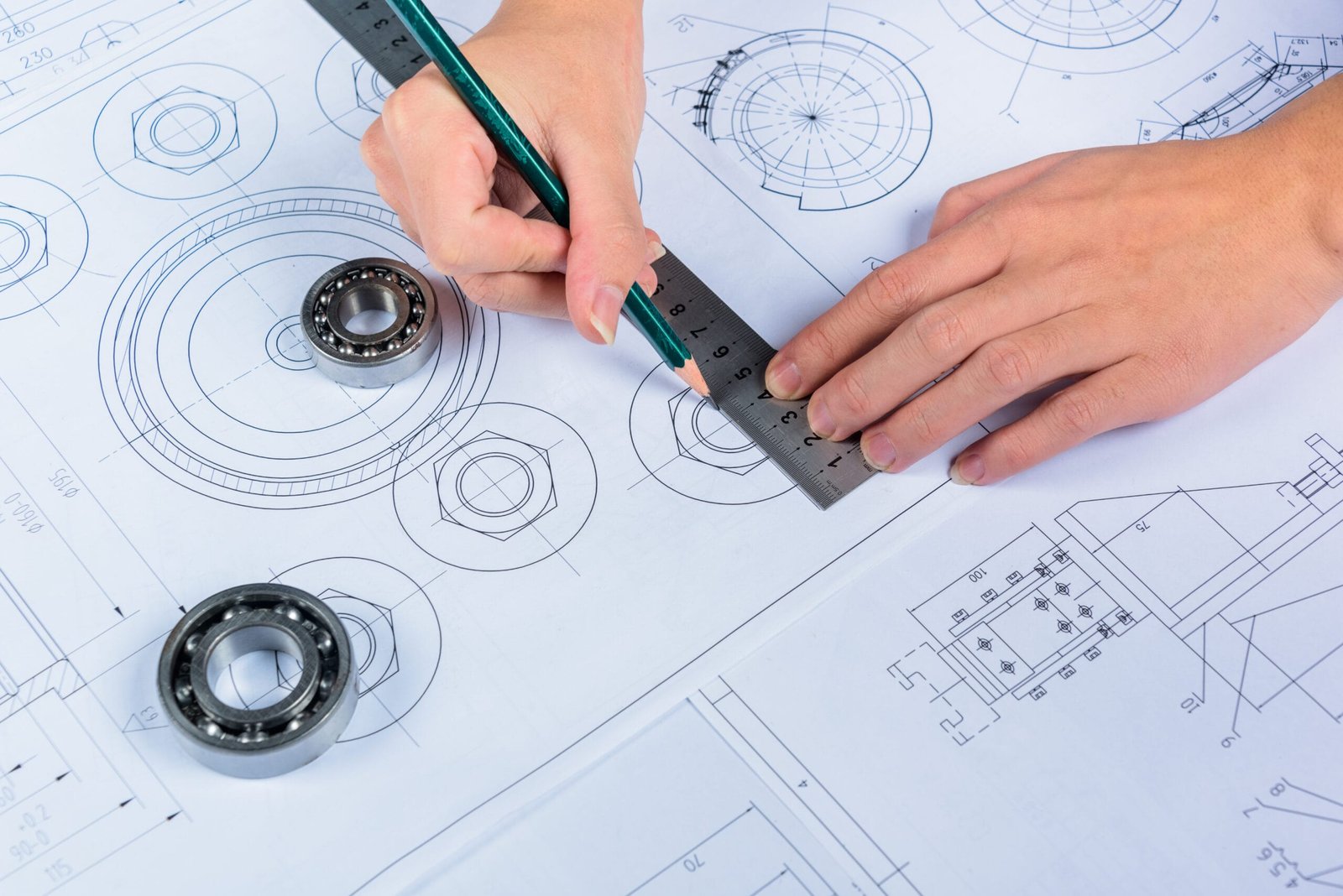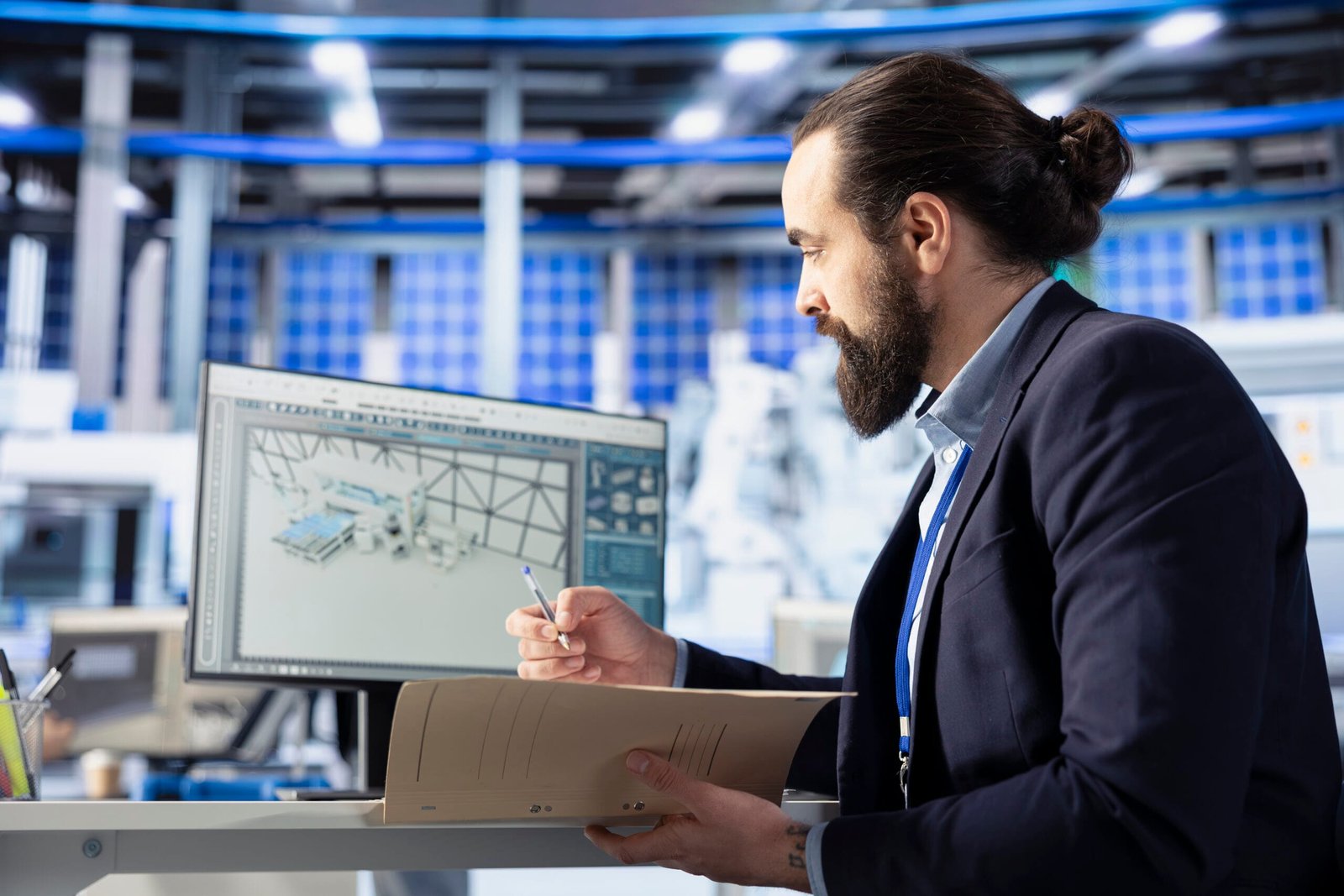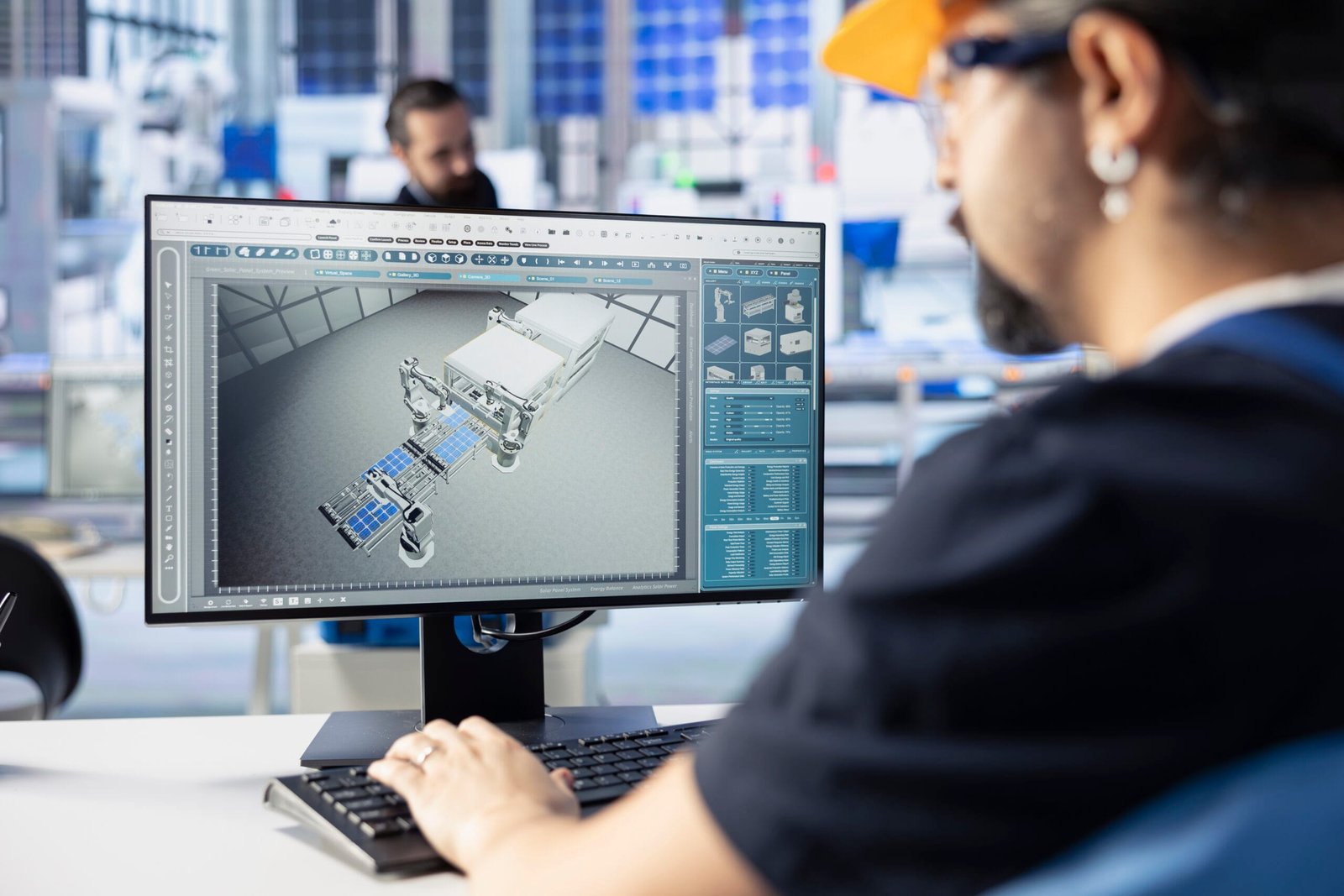Description:
Discover how DesignHok’s Photorealistic Part Rendering services are transforming product visualization in mechanical design, 3D modeling, and engineering. Learn how this powerful technique helps engineers, clients, and stakeholders visualize parts before production.
Introduction
In the fast-evolving world of mechanical design and 3D modeling, clients no longer want to imagine what a finished product might look like—they want to see it. That’s where Photorealistic Part Rendering comes in. At DesignHok, we specialize in delivering highly detailed, true-to-life renderings that make mechanical components look as real as possible—even before they are physically manufactured.
Photorealistic Part Rendering bridges the gap between technical design and visual storytelling. It adds depth, light, texture, and shadows to a basic CAD model, creating an image so lifelike that it can often be mistaken for a photograph. This blog explores the power of Photorealistic Part Rendering, how it benefits clients, and why DesignHok is your best partner for this innovative service.
What Is Photorealistic Part Rendering?
Photorealistic Part Rendering is a digital visualization technique used to create high-resolution, realistic images of mechanical parts, assemblies, or products. Using advanced rendering software, we simulate materials, lighting, reflections, and shadows to make the image look like a real-world photograph.
At DesignHok, we take your 3D models—whether created in AutoCAD, SolidWorks, Fusion 360, or other platforms—and transform them into stunning visuals. These rendered images can show polished metal, brushed aluminum, matte finishes, rubber textures, or even transparent materials like glass or plastic, all with precision and realism.
Why Photorealistic Rendering Matters in Mechanical Design
1. Enhanced Visualization
DesignHok’s renderings help stakeholders, clients, or investors visualize how a part will look in the real world. This can be extremely helpful during the early design stages, where 2D sketches and wireframe models may not clearly communicate the product vision.
2. Fewer Design Errors
Seeing a part in photorealistic detail often uncovers issues that are not obvious in CAD drawings. Visual feedback can highlight design flaws, poor material choices, or functional misalignments, helping to refine the final product before manufacturing.
3. Impressive Presentations and Marketing
A well-rendered image can be used in product catalogs, marketing brochures, client proposals, and investor presentations. DesignHok’s renderings are not only functional—they’re also visually striking, giving your project a professional edge.
4. Client Communication
Sometimes, clients may not have a technical background and struggle to understand engineering drawings. Photorealistic renders bridge that communication gap, making it easier for clients to grasp concepts and approve designs faster.
Our Photorealistic Part Rendering Process at DesignHok
At DesignHok, our rendering process is precise, creative, and efficient. Here’s how we bring your designs to life:
Step 1: Model Collection or Creation
We begin by collecting the 3D model from the client or creating one based on provided specifications. This model forms the foundation of the rendering process.
Step 2: Material and Texture Mapping
We apply realistic materials to the 3D model—such as steel, rubber, plastic, or carbon fiber—depending on the product’s use case. Each material is carefully mapped for accurate surface reflection, color, and texture.
Step 3: Lighting Setup
Lighting is key to realism. We position light sources to simulate natural or artificial lighting conditions. Whether it’s sunlight, indoor illumination, or spotlighting, we craft the perfect environment for your part.
Step 4: Camera Angle and Composition
Our team chooses the best angles and framing to showcase the design. We highlight important features, fine details, and complex geometry to give clients a comprehensive visual.
Step 5: Rendering and Post-Processing
We use high-end rendering software (like KeyShot, Blender, or V-Ray) to produce the final image. After rendering, we enhance the image with color correction and visual polish in post-processing tools like Photoshop.
Industries We Serve
Photorealistic part rendering has wide application across various sectors. At DesignHok, we proudly serve:
- Automotive – Engine parts, gearboxes, chassis components
- Aerospace – Jet turbine blades, control systems, fuselage components
- Consumer Electronics – Casings, buttons, and internal layouts
- Manufacturing – Tools, machines, sheet metal components
- Medical Devices – Implants, instruments, mechanical aids
Each industry demands a unique approach to texture, lighting, and detail—and our team ensures every rendering reflects those needs.
Software We Use
DesignHok leverages the best rendering tools available to ensure accuracy and efficiency:
- KeyShot – Great for fast and accurate renders with real-world materials
- Blender – Open-source but powerful for artistic control and lighting
- SolidWorks Visualize – Ideal for engineering-based models and assemblies
- V-Ray – Known for photorealism, lighting, and material control
- Fusion 360 – For integrated modeling and rendering solutions
Our software choices are matched to your project type to ensure the highest quality outcome.
Benefits of Choosing DesignHok for Rendering
- ✅ Fast Turnaround Time
- ✅ Experienced Mechanical Designers
- ✅ High-Resolution Output (Up to 8K)
- ✅ Support for Revisions and Feedback
- ✅ Affordable Pricing for All Business Sizes
Final Thoughts
Photorealistic Part Rendering is no longer a luxury—it’s a necessity for any business that values precision, presentation, and performance. At DesignHok, we bring unmatched clarity and visual beauty to your parts and assemblies. Whether you’re a startup with a new idea or an enterprise optimizing your product line, our rendering services will elevate your design process.
Let DesignHok help you see your parts before they’re made—clearly, beautifully, and realistically.
Frequently Asked Questions (FAQ)
Q1: What file formats do you accept for 3D rendering?
A: We accept a wide range of 3D file formats including STEP, IGES, STL, OBJ, SLDPRT, and native files from Fusion 360, SolidWorks, and AutoCAD.
Q2: Can you render assemblies with multiple parts?
A: Absolutely. We specialize in both single-part and multi-part assemblies. We ensure accurate material assignment, lighting, and realism across all parts.
Q3: How long does it take to complete a rendering project?
A: Depending on complexity, we can deliver in as little as 2–5 business days. Larger projects or multiple angle views may take longer.
Q4: Do I need to provide material specifications?
A: It’s helpful but not required. If you have preferred materials, textures, or finishes in mind, we can apply them. Otherwise, we suggest the best options based on design use.
Q5: Can I request revisions to the renderings?
A: Yes! We offer a revision process to ensure you’re 100% satisfied with the final image. Feedback is always welcome.
Q6: Do you also offer animations or 360-degree views?
A: Yes, in addition to static renders, we provide animated part rotation, assembly walkthroughs, and interactive 360° product views on request.
Q7: How do you ensure the realism of materials and lighting?
A: We use physically-based rendering (PBR) techniques and HDRI lighting environments to simulate how real-world light interacts with materials.





